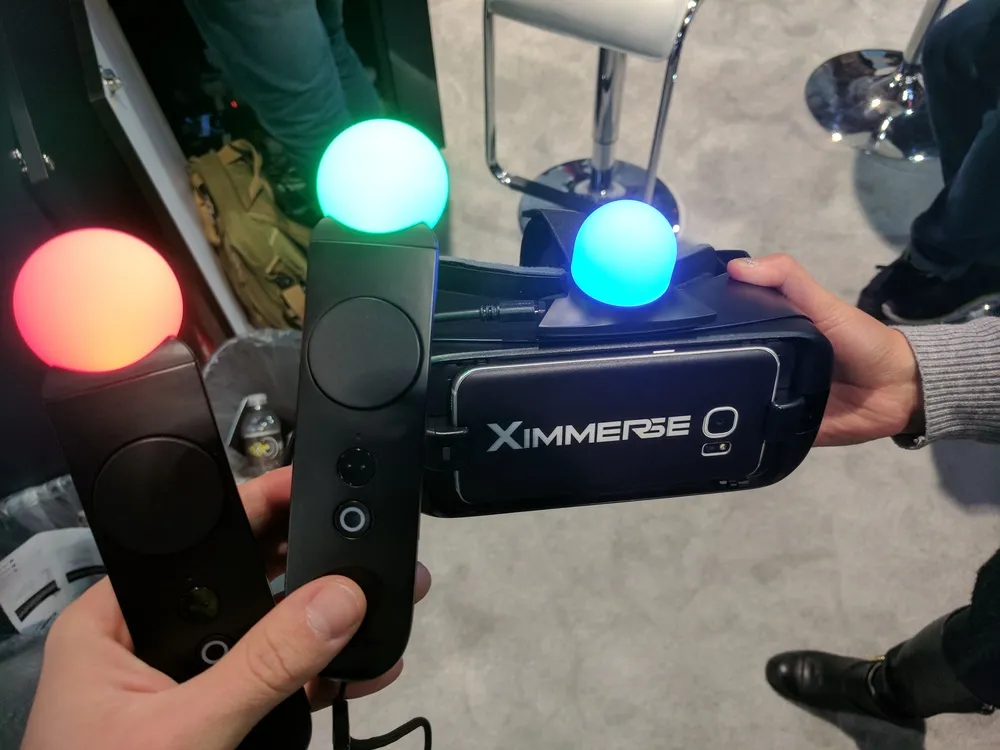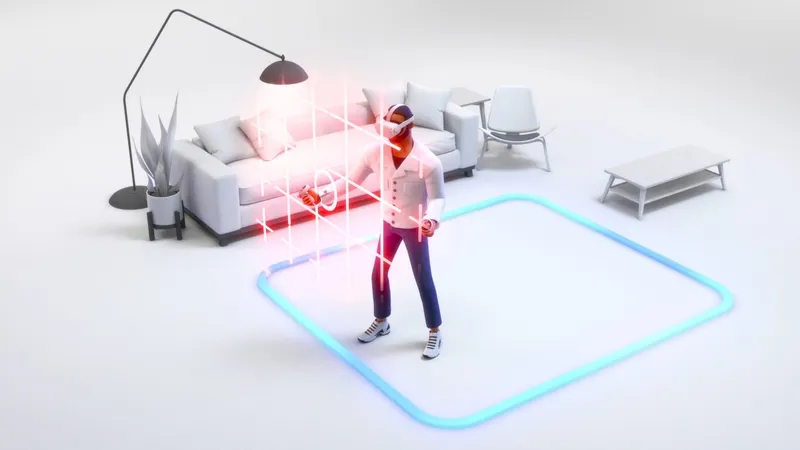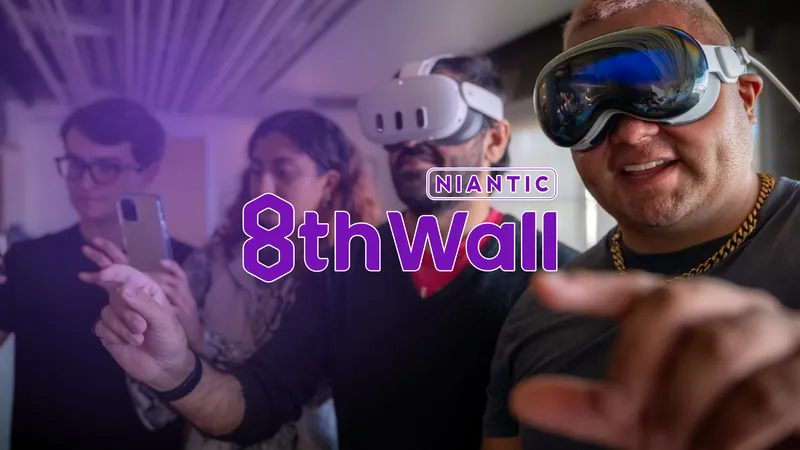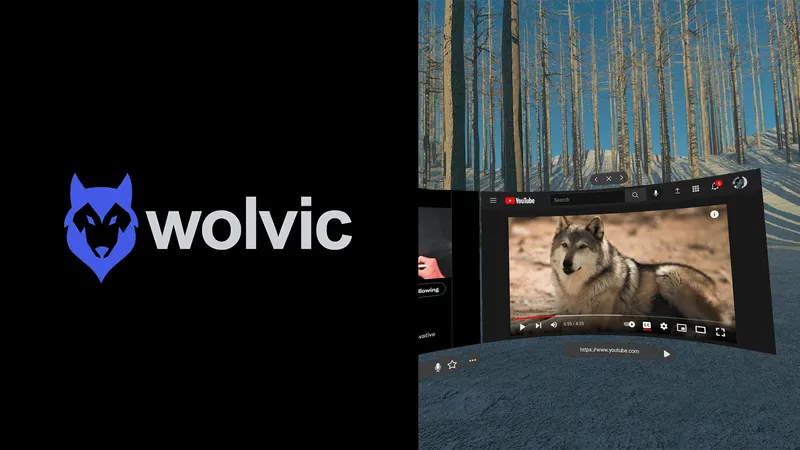By the time I reached my Ximmerse appointment at CES this year, I’d already been taught a lesson in skepticism. Kwik VR’s wireless add-on kit had underwhelmed me, and we’d seen one disappointing standalone demo from Intel. I won’t lie: I wasn’t expecting much from this meeting either, but the Chinese company’s tech actually ended up being one of the highlights of CES for me.
Ximmerse is working on two tracking technologies right now, and they’re both worth paying attention to.
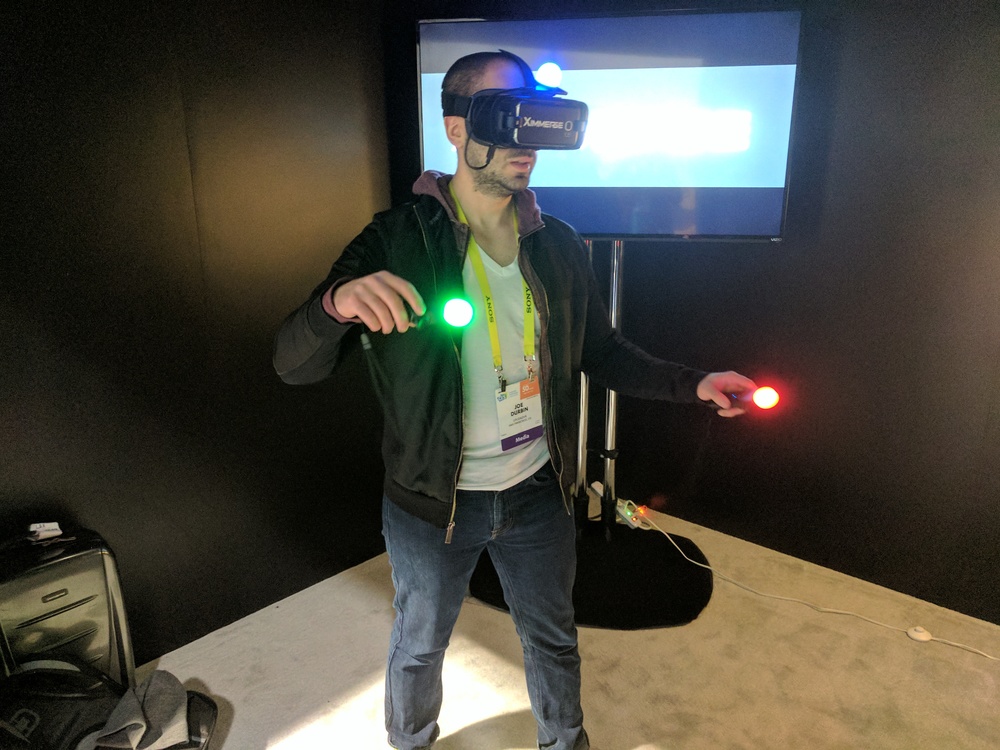
The first is an outside-in solution for mobile headsets like Gear VR. It consists of a camera-based sensor system that the company says offers a 120 degree field of view (FOV) covering a 3 x 3 meter place space. The system tracks three LED lights, two of which are fitted to the end of remote-like controllers with back triggers, circle pads, and grip, menu, and home buttons. They look a little like someone took the PlayStation Move’s light and fitted it to Google’s Daydream controller along with some added buttons from the Vive wands.
The third light, meanwhile, is fitted to the headset itself which, for the purposes of this demo, was a Gear VR. This light also contains a piece which receives tracking data from the camera over a 2.4GHz wireless connection. These elements combined provide a positional tracking system similar to what can be seen on PlayStation VR, except it is wireless.
I played a Fruit Ninja clone in which my two controllers were swords and I could swing to cut up food thrown in front of me. It was a simple but effective demonstration of what the tech could do; the controls were responsive, with a small amount of latency that didn’t seem to impact my performance in the game. The headset’s positional tracking, meanwhile, worked without any perceived latency. It felt like it was running on a normal Gear VR with no added delay between head movement and image displayed. The only drawback is that occlusion could become a problem for some apps — especially when your hands block the headset’s light — limiting the freedom mobile VR gives you.
That’s especially true considering the outside-in kit will require you to play in front of a camera you’ve set up. That said the system seems adaptable; we played in two different spaces in the booth and the camera was simply picked up and placed elsewhere with no calibration.
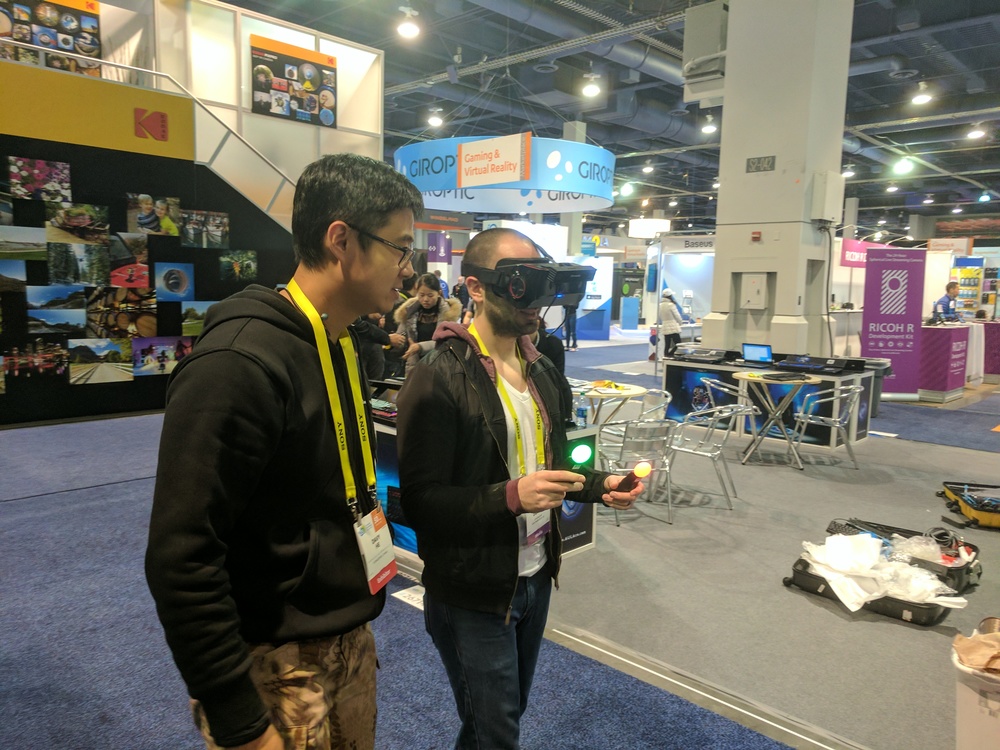
Still, as is the case with all VR headsets, outside-in tracking is a stopgap on the path to inside-out, and Ximmerse is working on that too. The company’s solution is very similar to the outside-in kit, only this time you stick the camera to your headset, replacing the third light. This time we tested it with a Qualcomm reference headset. I was told that the Ximmerse sensor was only tracking my controllers, while Qualcomm’s device was doing the inside-out headset tracking.
This time I tried software much like Tilt Brush that gave me an entire world in which to walk around in and paint. Luckily it was a Sunday at CES so the crowds had died down and I was able to walk along one of the halls of the convention center (with a guide) to test the system out. Again, I found tracking to be very accurate with minimal latency. I didn’t notice any drift. At one point a member of the Ximmerse team took one controller and painted a line for me to follow, which was a unique way to demonstrate the benefits of inside-out tracking.
Still, I have a lot of questions about the inside-out kit and how capable it will be when a consumer version comes out. Ximmerse says its outside-in kit should be shipping in March for $99, but its inside-out kit is a little further out than that. Though the latter device is the more important of the two, I was impressed with both as a means of bringing positional tracking to headsets that are sorely in need of it.

